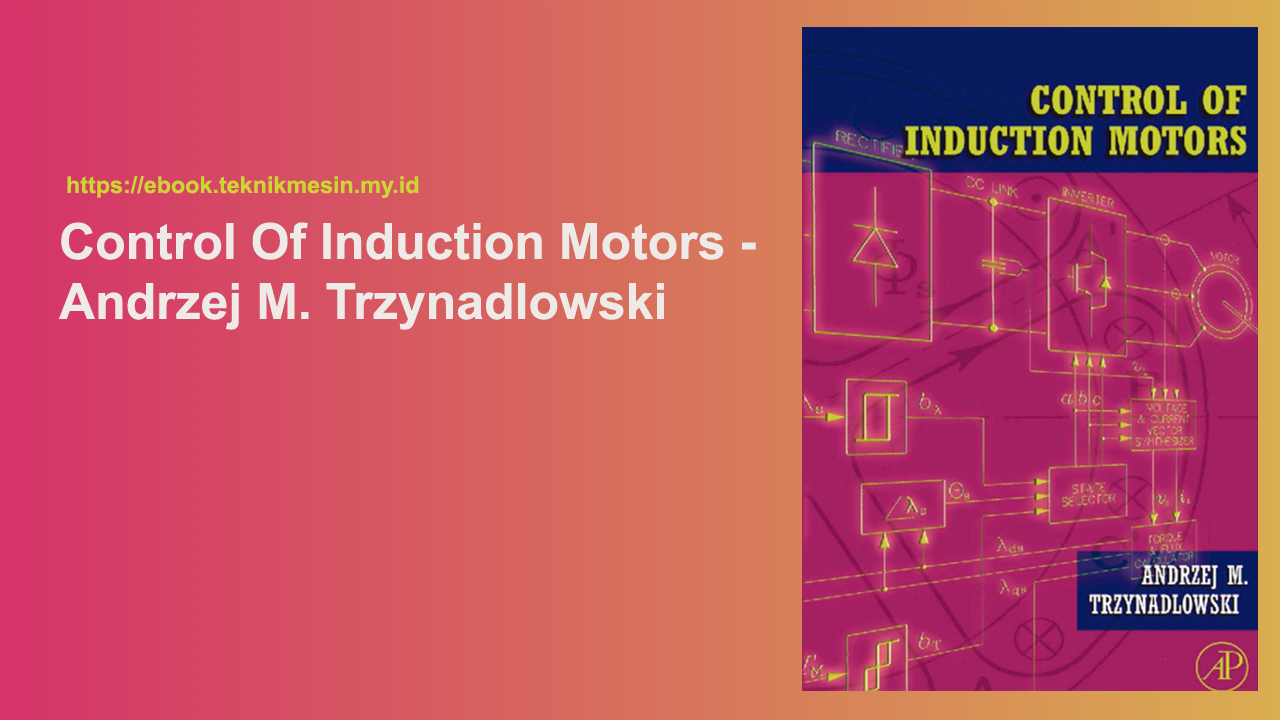Control Of Induction Motors
%20(Engineering)%20(%20ebook.teknikmesin.my.jpg)
PREFACE
INDUCTION MOTORS
Three-phase induction motors are so common in industry that in many plants no other type of electric machine can be found. The author remem- bers his conversation with a maintenance supervisor in a manufacturing facility who, when asked what types of motors they had on the factory floor, replied: ‘‘Electric motors, of course. What else?’’ As it turned out, all the motors, hundreds of them, were of the induction, squirrel-cage type. This simple and robust machine, an ingenious invention of the late nineteenth century, still maintains its unmatched popularity in industrial practice.
Induction motors employ a simple but clever scheme of electrome- chanical energy conversion. In the squirrel-cage motors, which constitute a vast majority of induction machines, the rotor is inaccessible. No moving contacts, such as the commutator and brushes in dc machines or slip rings and brushes in ac synchronous motors and generators, are needed.
This arrangement greatly increases reliability of induction motors and elimi- nates the danger of sparking, permitting squirrel-cage machines to be safely used in harsh environments, even in an explosive atmosphere. An additional degree of ruggedness is provided by the lack of wiring in the rotor, whose winding consists of uninsulated metal bars forming the ‘‘squirrel cage’’ that gives the name to the motor.
Such a robust rotor can run at high speeds and withstand heavy mechanical and electrical over- loads. In adjustable-speed drives (ASDs), the low electric time constant speeds up the dynamic response to control commands. Typically, induction motors have a significant torque reserve and a low dependence of speed on the load torque.
The less common wound-rotor induction motors are used in special applications, in which the existence and accessibility of the rotor winding is an advantage. The winding can be reached via brushes on the stator that ride atop slip rings on the rotor. In the simplest case, adjustable resistors (rheostats) are connected to the winding during startup of the drive system to reduce the motor current.
Terminals of the winding are shorted when the motor has reached the operating speed. In the more complicated so-called cascade systems, excess electric power is drawn from the rotor, conditioned, and returned to the supply line, allowing speed control. A price is paid for the extra possibilities offered by wound- rotor motors, as they are more expensive and less reliable than their squirrel-cage counterparts.
In today’s industry, wound-rotor motors are increasingly rare, having been phased out by controlled drives with squirrel-cage motors. Therefore, only the latter motors will be considered in this book.
Although operating principles of induction motors have remained unchanged, significant technological progress has been made over the years, particularly in the last few decades. In comparison with their ances- tors, today’s motors are smaller, lighter, more reliable, and more efficient.
The so-called high-efficiency motors, in which reduced-resistance wind-ings and low-loss ferromagnetic materials result in tangible savings of consumed energy, are widely available. High-efficiency motors are some- what more expensive than standard machines, but in most applications the simple payback period is short. Conservatively, the average life span of an induction motor can be assumed to be about 12 years (althoughproperly maintained motors can work for decades), so replacement of a worn standard motor with a high-efficiency one that would pay off for its higher price in, for instance, 2 years, is a simple matter of common sense.
Niat dan tujuan "Engineering Books" tidak lain tidak bukan hanya untuk bergbagi informasi. Kami percaya bahwa akses pendidikan berkualitas adalah hak mendasar bagi setiap anak Indonesia.
Jika Anda menemukan tulisan yang persis sama di luar blog ini yang tidak menampilkan kredit saya sebagai penulisnya, mohon berkenan menghubungi saya, Untuk Segera Mungkin Kami TakeDwon karena bagaimana pun tulisan tersebut tetaplah menjadi tanggung jawab ebook.teknikmesin.my.id.


